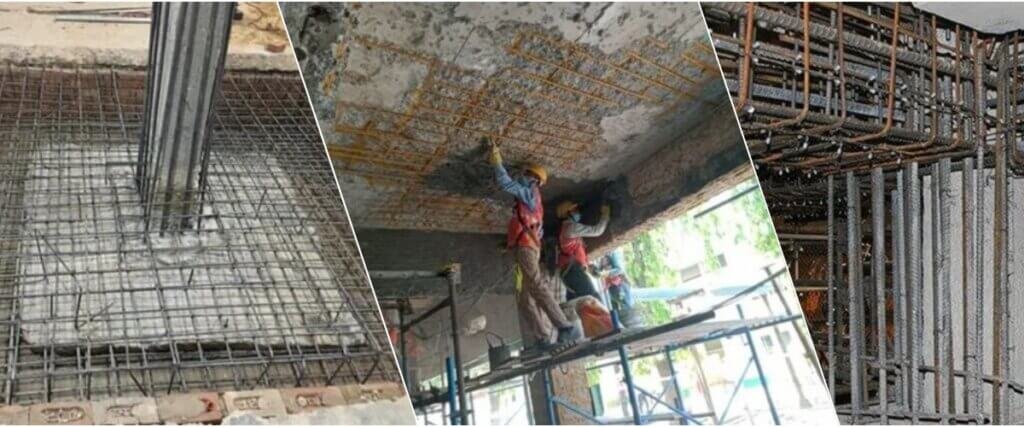Structural Repair Services
Best Structural Repair Services in India

Why is Structural Strengthening Important?
Structural strengthening involves reinforcing or strengthening the structure, so it performs as designed and fulfils today’s usage requirements, while also extending its life. With constant usage of a building, loading on the structure and ageing, there is an increasing demand for the repair and strengthening of concrete structures.
Gubbi Civil Engineers Limited are the leader in building rehabilitation, repair and rehabilitation of structures in India, ensuring structural strengthening, protecting from environmental deterioration, mitigating corrosion in the structure, strengthening to carry heavier loads, and increasing the stability of the structure for a long time.
Our Structural Strengthening Services
Carbon Fibre Wrapping
Flexural - Shear Strengthening
Glass Fiber Wrapping
Micro-Concrete with Jacketing
Polymer Modified Mortar
Epoxy Mortar
Sacrificial Anode
Guniting and Shotcreting
Industries We Serve
- Industrial Plants and Warehouses
- Power sectors, Oil and Gas refineries
- Educational Institutions
- Commercial Complexes and Office Spaces
- Government Infrastructure and Public Buildings
- Bridges and Infrastructure Assets
- Real Estate Developers and Housing Societies
Why Choose Us as Your Structural Retrofitting Company in India?
- 32+ years of experience: Our history in the repairs sector enables us to provide proven solutions.
- Technical excellence: We modernise, mechanise and update our repair techniques to guarantee effectiveness both in the short and long term
- Tailored solutions: Our professionals offer tailored, site-specific, and inspection-based recommendations to address the structure’s requirements, including its usage
- Broad project portfolio: From high-rise National Infra structures to industrial plants and commercial buildings, we have transformed structures across most sectors
- Minimal operational disruption: We operate in active locations that have the least downtime and the highest safety standards
Frequently Asked Questions
What is the difference between structural repair and strengthening?
While structural repair focuses on already sustained damage—like cracks and spalling—strengthening involves increasing a structure’s load-bearing capacity through Carbon Fibre Wrapping or Micro Concrete Jacketing
When is structural retrofitting necessary?
Retrofitting becomes crucial when a structure is showing signs of distress, no longer compliant with safety regulations, or requires increasing the load carrying capacity, such as transforming an office into a hospital or data centre
Can you retrofit an operational building without shutting it down?
Most of our retrofitting solutions enable ongoing building occupancy. To maintain operations, we employ low-noise works, rapid-setting compounds, and staged monotone work sequences
How long does structural strengthening last?
Strengthening systems, when implemented with proper materials and strategies, can enhance the lifespan of a structure by over 20 to 30 years
